Shifting Expectations
My recent editorial "Death to the Stick Shift" questioned the safety of– and slavish affection for– manual transmissions. The main premise of my article was simple: it takes a higher level of driver attention to operate a manual transmission than an automatic.
This point was proven by my many critics, who argued that driving a stick shift prevents drivers from engaging in dangerous multi-tasking. This erstwhile advantage simply reinforces the assertion that a manual demands greater concentration (however subconscious). By the same token, it's disingenuous to assert that an automatic transmission is inherently dangerous because it allows drivers to talk on their cell, eat, drink or otherwise distract themselves. Inattentive drivers are a hazard, no matter what kind of car they drive.
Fans of the manual transmission may not realize that they are merely lever pushers; the synchronizers inside the gearbox do the actual shifting. Anyone who's driven a non-synchro box is immediately aware that there is a much higher level of skill and experience needed to shift gears. So, if attending to the mechanical needs of the car makes someone a better driver, wouldn't a non-synchro box make them an even better driver? Should we turn back the clock of progress in the mistaken belief that it's safer to work harder? Of course not.
The second recurring theme expressed by my less splenetic respondents is that stick shifts are more fuel efficient than automatics. This opinion is usually based upon a narrow analysis of a particular component, rather than an analysis of total powertrain efficiency.
An automatic's torque converter actually increases the torque output, while allowing engine speed to rise– sort of like a hydraulic version of a CVT (continuous variable transmission). Thus the increase in engine speed upon acceleration in an auto-equipped car is not slippage, but the torque converter acting as, essentially, a lower gear. (A side benefit is that the engine has a higher torque output at higher speed, increasing acceleration even more.) The hydrodynamic losses in the autobox' torque converter are more than made up by the increase in effective gear ratio spread.
Gear ratio spread is, simply put, the ratio between the lowest and the highest ratio in a given box. A larger ratio spread allows the box to have a lower first gear (for better initial acceleration) and a higher top gear (for quieter cruising). Typically, a modern six-speed transmission has a ratio spread of about six, while an average four-speed automatic has a ratio spread of about 10 to 11. This allows engine speed to be more efficiently matched to the vehicle's needs.
Couple this inherent efficiency advantage with sophisticated electronic controls that measure the vehicle's lateral and longitudinal accelerations, monitor the position, speed and rate of change of driver controls; and it's easy to see how a modern automatic transmission can anticipate the driver and vehicle needs and to consistently provide the proper gear ratio.
Many e-mailers also took issue with my claim that automatics are cheaper to maintain than standards. Historically, manual transmissions may have been less expensive to maintain than their automatic counterparts, but the stick shift's mechanical evolution (read: increasing sophistication) has reduced the gap to naught. Today, replacing a clutch on Thunderbird Super Coupe at a franchised Ford dealer will cost over $2000 in labor alone. Rebuilding the 5-speed transmission of a light-duty Ford F150 will set you back well over $4000.
The corollary to this argument is that manual transmissions are more durable than automatics. If that were the case, every corporate fleet in America would be stocked with manual transmission cars and trucks. Fleet managers earn their bonuses by cutting costs, and they have a huge amount of real world data upon which to make objective financial decisions. Hence the near total dominance of automatic transmissions within large fleets. Think about it: the chances of finding a manual transmission taxi are somewhat less than finding a lunar rover trolling for passengers in Manhattan.
Other control components of vehicles, including the steering wheel, are based on decades of psychological and anthropometric research. There have been many attempts to replace the steering wheel, including joysticks, but the human brain just isn't wired for them. Even the operational convention of turning clockwise for a right turn evolved through years of study and 'field testing'. There are many studies on the efficiency and safety of current automotive controls. Yet many enthusiasts would exempt manual transmissions from the normal process of mechanical evolution, which has already led to the development of the modern automatic transmission.
Meanwhile, the consumer has spoken. The millions of US buyers who opt for today's automatic transmissions do not do so because they are stupid, uncoordinated, unsafe or oblivious to the joys of driving. They do so because they know a good thing when they drive one.
More by Bob Elton
Latest Car Reviews
Read moreLatest Product Reviews
Read moreRecent Comments
- Redapple2 Good luck to them. They used to make great cars. 510. 240Z, Sentra SE-R. Maxima. Frontier.
- Joe65688619 Under Ghosn they went through the same short-term bottom-line thinking that GM did in the 80s/90s, and they have not recovered say, to their heyday in the 50s and 60s in terms of market share and innovation. Poor design decisions (a CVT in their front-wheel drive "4-Door Sports Car", model overlap in a poorly performing segment (they never needed the Altima AND the Maxima...what they needed was one vehicle with different drivetrain, including hybrid, to compete with the Accord/Camry, and decontenting their vehicles: My 2012 QX56 (I know, not a Nissan, but the same holds for the Armada) had power rear windows in the cargo area that could vent, a glass hatch on the back door that could be opened separate from the whole liftgate (in such a tall vehicle, kinda essential if you have it in a garage and want to load the trunk without having to open the garage door to make room for the lift gate), a nice driver's side folding armrest, and a few other quality-of-life details absent from my 2018 QX80. In a competitive market this attention to detai is can be the differentiator that sell cars. Now they are caught in the middle of the market, competing more with Hyundai and Kia and selling discounted vehicles near the same price points, but losing money on them. They invested also invested a lot in niche platforms. The Leaf was one of the first full EVs, but never really evolved. They misjudged the market - luxury EVs are selling, small budget models not so much. Variable compression engines offering little in terms of real-world power or tech, let a lot of complexity that is leading to higher failure rates. Aside from the Z and GT-R (low volume models), not much forced induction (whether your a fan or not, look at what Honda did with the CR-V and Acura RDX - same chassis, slap a turbo on it, make it nicer inside, and now you can sell it as a semi-premium brand with higher markup). That said, I do believe they retain the technical and engineering capability to do far better. About time management realized they need to make smarter investments and understand their markets better.
- Kwik_Shift_Pro4X Off-road fluff on vehicles that should not be off road needs to die.
- Kwik_Shift_Pro4X Saw this posted on social media; “Just bought a 2023 Tundra with the 14" screen. Let my son borrow it for the afternoon, he connected his phone to listen to his iTunes.The next day my insurance company raised my rates and added my son to my policy. The email said that a private company showed that my son drove the vehicle. He already had his own vehicle that he was insuring.My insurance company demanded he give all his insurance info and some private info for proof. He declined for privacy reasons and my insurance cancelled my policy.These new vehicles with their tech are on condition that we give up our privacy to enter their world. It's not worth it people.”
- TheEndlessEnigma Poor planning here, dropping a Vinfast dealer in Pensacola FL is just not going to work. I love Pensacola and that part of the Gulf Coast, but that area is by no means an EV adoption demographic.



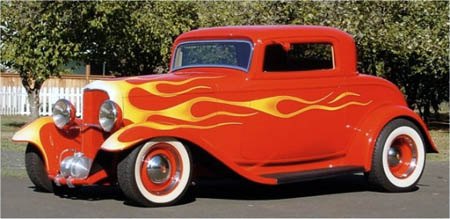

















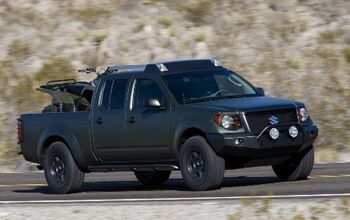
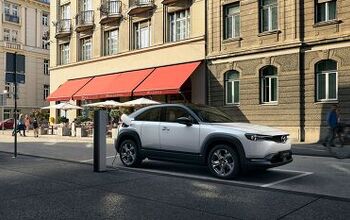

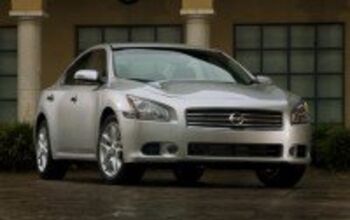
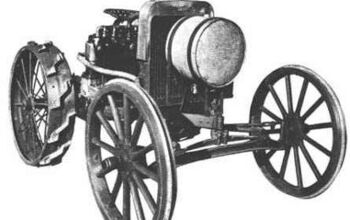











Comments
Join the conversation
Sorry, Bob, but I still think you are smoking crack. I don't really believe your "facts" about the points you make re: a manual transmission, but I also don't care to dispute them. The one fact I do dispute is that shifting gears is a form of inattentiveness. Sorry, Bob, but paying attention to how one's engine sounds and feels and being a part of the process of driving is not equal to putting on mascara, talking on the cell phone, or eating a Big Mac while driving. On the contrary, it is important to watch the speed of the car, the sound, the terrain, the weather conditions, etc., when operating a manual. It is being acutely aware of what is going on with the vehicle and paying attention to driving, not being desensitized, like so many drivers are when it is so easy to drive and simultaneously do 10 other things. As a culture, we are so desensitized to the danger of driving. We speed around in these huge, overpowered vehicles that can and do actually kill people. If we were more acutely aware of this, do you think we'd be watching DVDs, etc., while driving? Driving a stick is a means by which people CAN be more acutely aware of what they are actually doing behind the wheel. Can be. I'm not saying that everyone who drives a stick is a great driver, but for me, I am a far better driver because I am paying more, not less, attention to what I am doing. Got it?